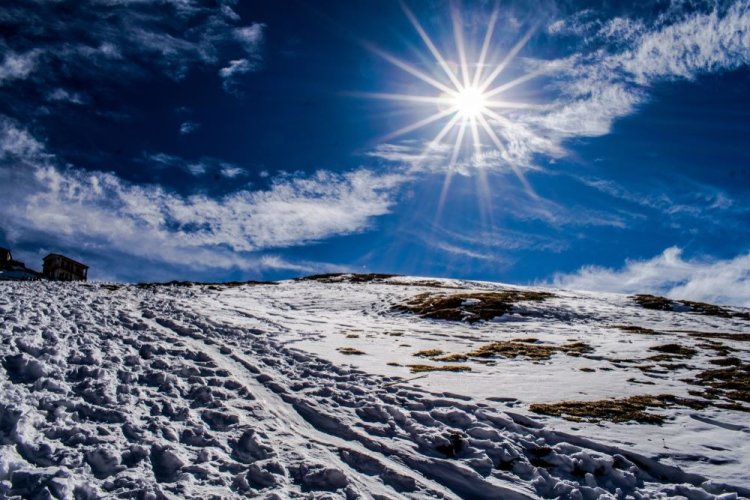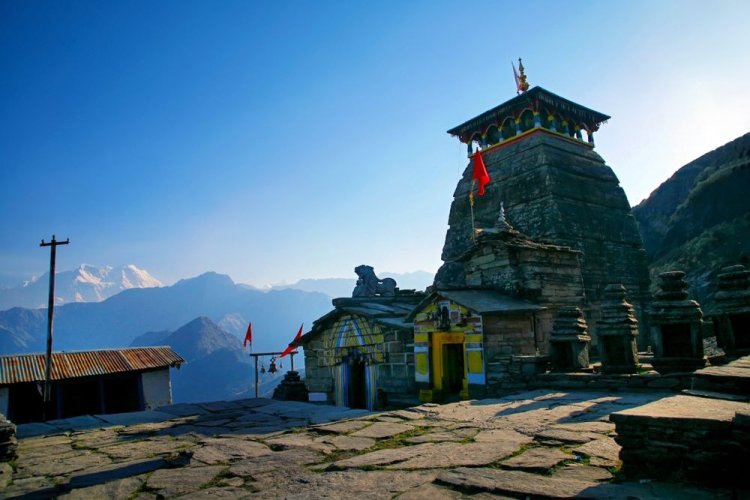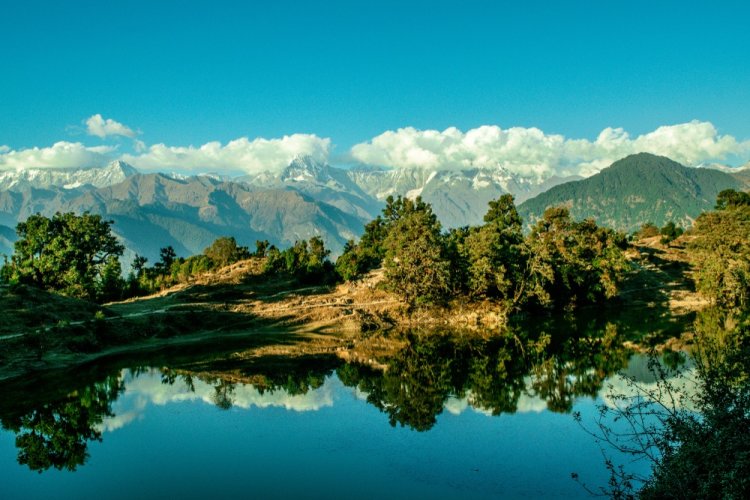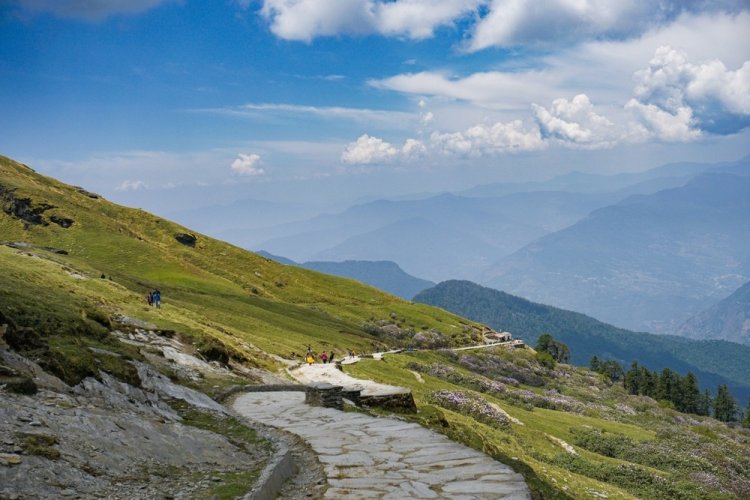How to Reach Chopta Tungnath: Travel Tips and Routes
Discover the best travel tips and routes to reach Chopta Tungnath. Plan your adventure with our easy-to-follow guide and make the most of your journey.

Hey fellow adventurers! If you're looking for a destination that offers breathtaking views, thrilling trekking experiences, and a spiritual retreat, look no further than Chopta Tungnath. Nestled in the Indian Himalayas, this unspoiled gem is a paradise for nature lovers and trekkers alike. Let me guide you on how to reach this beautiful destination and make the most of your trip. Ready? Let's go!
Discovering Chopta Tungnath

Chopta Tungnath, often called the "Mini Switzerland of India," is a place that feels like it’s straight out of a fairy tale. Imagine waking up to panoramic views of the majestic Himalayan peaks like Nanda Devi, Trishul, and Chaukhamba. This destination is part of the Kedarnath Wildlife Sanctuary, offering a perfect blend of adventure and serenity.
Chopta is about being in the purest form of nature, not merely a visual feast. The lush meadows, dense forests, and crisp mountain air make you feel rejuvenated. Whether you're a seasoned trekker or a casual nature enthusiast, Chopta has something for everyone. The tranquility here allows you to disconnect from the hustle and bustle of city life and truly immerse yourself in nature.
Moreover, Chopta serves as the base for the trek to Tungnath, the highest Shiva temple in the world. This adds a spiritual dimension to your adventure, making it a holistic experience. As you ascend the trail, you can feel a sense of peace and spirituality enveloping you, creating a unique blend of adventure and devotion.
Why Chopta Tungnath Should Be on Your Bucket List
Why should you pack your bags and head to Chopta Tungnath? Well, picture this: standing at a vantage point where the sky meets the land, with clouds at your feet and the Himalayas as your backdrop. Chopta is not just a treat for the eyes but also the soul, being the starting point for the trek to Tungnath, the highest Shiva temple in the world.
Traveling to Chopta is an experience in itself. The scenic drive through the winding mountain roads, with occasional glimpses of snow-capped peaks, is an experience to cherish. Once you arrive, the pristine environment and the lack of commercialization make it a perfect getaway for those seeking peace and solitude. You can actually relax there and establish a connection with the natural world.
Chopta also offers opportunities for bird watching, photography, and camping. The region is home to a variety of birds and wildlife, making it a paradise for bird watchers and nature photographers. Camping under the starlit sky, with the sounds of nature as your lullaby, is an experience that will stay with you forever. Chopta Tungnath is more than just a destination; it's a journey to rediscover yourself.
The Best Time to Visit Chopta Tungnath
Choosing the best time to visit depends on what kind of experience you're after. For lush greenery and blooming rhododendrons, plan your trip between April and June. During these months, the weather is pleasant, and the meadows are in full bloom, offering a spectacular sight. It’s also a great time for bird watching as many migratory birds visit the region.
If you’re a fan of snow and winter trekking, December to February is your window. The area is transformed into a wintry paradise as a thick layer of snow covers it all. The trek to Tungnath during this time is more challenging but equally rewarding. The serene beauty of the snow-covered landscape and the crisp, cold air make it a memorable experience for winter trekking enthusiasts.
Monsoon months (July to September) can be tricky due to landslides, so it’s best to avoid them. The trails become slippery and dangerous, and the risk of landslides increases. However, if you do visit during the monsoon, you’ll witness a different kind of beauty with lush greenery and numerous waterfalls. Just ensure to check the weather and road conditions before planning your trip during this period.
Getting to Chopta: Your Adventure Begins
By Air
If you’re flying in, the nearest airport is Jolly Grant Airport in Dehradun, about 221 km away. From there, you can grab a taxi or hop on a bus to reach Chopta. The drive from Dehradun to Chopta takes you through some picturesque landscapes, making your journey as enjoyable as the destination itself.
By Train
Prefer the train? The closest railway station is in Rishikesh, around 202 km from Chopta. Once you’re there, taxis and buses will get you to your destination. The train journey to Rishikesh offers stunning views of the lower Himalayas and the Ganges river, adding a spiritual touch to your adventure.
By Road
Chopta has good road access to Uttarakhand's largest cities. If you’re driving from Delhi, it’s about 450 km. The road trip is an adventure in itself, passing through beautiful towns like Haridwar and Rishikesh. As an alternative, you might hire local transportation from Rudraprayag to Chopta after taking a bus there. The roads are generally in good condition, but it's advisable to check the weather forecast and road conditions, especially during the monsoon season.
Trekking Routes: Your Path to Tungnath

Chopta to Tungnath Trek
The trek from Chopta to Tungnath is a moderate 3.5 km journey that will take you through verdant meadows and dense forests. The trail is well-marked, with a gradual elevation gain, making it perfect even for beginners. You will be rewarded with breathtaking views of the surrounding peaks and valleys as you rise.
The trek usually takes about 2-3 hours, depending on your pace and fitness level. Along the way, you’ll encounter a variety of flora and fauna, making the trek a delightful experience for nature lovers. The fresh mountain air and the serene environment add to the overall experience, making it a refreshing break from the urban chaos.
Upon reaching Tungnath, the highest Shiva temple in the world, you’ll be struck by the tranquility and spirituality of the place. The temple’s ancient architecture, combined with the breathtaking views of the Himalayas, creates a surreal atmosphere. It’s a perfect spot to rest, meditate, and soak in the beauty of nature and spirituality.
Tungnath to Chandrashila Trek
For the more adventurous, the 1.5 km trek from Tungnath to Chandrashila peak is a must-do. Standing at 4,000 meters, Chandrashila offers a 360-degree view of the snow-clad Himalayas. You feel like the world is your oyster! The trek is steeper and more challenging than the Chopta to Tungnath trail, but the panoramic views from the peak make every step worth it.
The best time to start this trek is early morning, to witness the sunrise from Chandrashila. The sight of the sun rising over the Himalayan peaks is a once-in-a-lifetime experience that you’ll cherish forever. The trek back to Chopta is equally rewarding, with different perspectives of the stunning landscape unfolding as you descend.
Along the way, you’ll find several spots perfect for photography, so make sure to carry your camera. The ever-changing scenery and the play of light and shadows on the mountains provide endless opportunities for capturing beautiful moments. Whether you’re a seasoned trekker or a beginner, the Tungnath to Chandrashila trek is an experience you shouldn’t miss.
Where to Stay: Accommodation Options in Chopta
Campsites
If you want to get close to nature, staying at one of the many campsites in Chopta is a fantastic option. These campsites offer basic amenities and the chance to sleep under the stars. Imagine waking up to the sound of birds chirping and the sight of the sun rising over the Himalayas—it's an experience that will stay with you forever.
Camping also allows you to immerse yourself in the natural beauty of Chopta. Most campsites are located in scenic spots, offering breathtaking views of the surrounding mountains and meadows. They also provide a great opportunity to meet fellow travelers and share stories around a bonfire, adding a social aspect to your adventure.
However, remember that camping in the mountains requires some preparation. Make sure you have the tools and resources you need, and pay attention to the weather. It’s also important to follow the Leave No Trace principles to minimize your impact on the environment and keep the area clean for future visitors.
Guesthouses and Lodges
Looking for more comfort? Chopta has several guesthouses and lodges that provide clean rooms, hearty meals, and a cozy atmosphere to unwind after a day of trekking. These accommodations range from budget options to more luxurious stays, catering to different preferences and budgets.
Staying in a guesthouse or lodge offers the advantage of having basic amenities like electricity, hot water, and comfortable beds. Many of these places are run by locals, giving you a chance to experience the local culture and hospitality. They often provide home-cooked meals, which are a delightful way to taste the local cuisine.
Most guesthouses and lodges are located close to the main trekking trails, making it convenient for you to start your trek early in the morning. They also offer valuable information about the local area, trekking routes, and weather conditions, helping you plan your adventure better. Whether you prefer a rustic lodge or a cozy guesthouse, you’ll find plenty of options in Chopta.
Packing Essentials: What You Need for the Journey
Packing wisely can make or break your trip. Here’s what you’ll need:
- Clothing: Layered clothing to adjust to changing temperatures. The weather in the mountains can be unpredictable, so it’s important to be prepared for both warm days and chilly nights. Pack a mix of lightweight and warm clothing, including thermal wear, fleece jackets, and a waterproof outer layer.
- Footwear: Sturdy trekking boots for those rugged trails. A good pair of trekking boots is essential for a comfortable and safe trekking experience. Make sure they are well-broken in before your trip to avoid blisters and discomfort.
- Essentials: Water bottles, snacks, a backpack, and trekking poles. Trekking poles provide extra stability on uneven terrain, while a good backpack ensures you can carry all your essentials comfortably. Pack high-energy snacks like nuts, dried fruits, and energy bars to keep you fueled during the trek.
- Others: Camera, binoculars, sunscreen, and a first aid kit. Remember to use your camera to capture the amazing scenery. Binoculars are great for bird watching and spotting distant peaks. Sunscreen is a must to protect your skin from the high-altitude sun, and a first aid kit is essential for dealing with minor injuries and emergencies.
Additionally, think about bringing a water filter or pills for purification along with a reusable container. Staying hydrated is crucial, especially at high altitudes, and it’s important to have a reliable source of clean drinking water. Additionally, packing a headlamp or flashlight is a good idea, as the nights in the mountains can be quite dark.
Lastly, don’t forget to pack some basic toiletries, personal hygiene items, and any medications you might need. Being prepared with all the necessary gear and supplies will ensure a comfortable and enjoyable trekking experience in Chopta Tungnath.
Staying Safe: Trekking Tips for Tungnath
Safety first, folks! The following advice will help to guarantee a secure hiking trip:
- Stay Hydrated: Drink plenty of water. Dehydration can sneak up on you, especially at high altitudes. Make sure you sip water regularly, even if you don’t feel thirsty.
- Acclimatize: Let your body acclimate to the higher altitude over time. Spend a day or two in Chopta before starting your trek to Tungnath to help your body acclimatize. This can help prevent altitude sickness, which can be serious if not addressed properly.
- Follow Trails: Stick to marked trails to avoid getting lost. It’s easy to get disoriented in the mountains, so always stick to the marked paths and follow any signage. If you’re unsure, don’t hesitate to ask locals or fellow trekkers for directions.
- Check Weather: Every time you set out on a hike, make sure to check the weather forecast. Weather in the mountains can change rapidly, and it’s important to be prepared for sudden changes. If the forecast predicts bad weather, it’s better to postpone your trek than risk getting caught in a storm.
In addition to these tips, make sure you trek in a group or hire a local guide. Trekking with others not only makes the experience more enjoyable but also adds an extra layer of safety. Local guides are familiar with the terrain and can provide valuable insights and assistance if needed.
Also, keep an eye on your surroundings and be aware of any potential hazards like loose rocks, slippery trails, or wildlife. Trekking in the mountains requires a certain level of fitness, so make sure you’re in good health and physically prepared for the trek. Pay attention to your body, take pauses when necessary, and avoid overexerting yourself.
Finally, carry a basic first aid kit with essentials like band-aids, antiseptic cream, pain relievers, and any personal medications. Knowing basic first aid can be incredibly helpful in case of minor injuries or medical issues. By following these safety tips, you can ensure a safe and enjoyable trekking experience to Tungnath.
The Spiritual Side: Exploring Tungnath Temple
Tungnath Temple, the highest Shiva temple in the world, is perched at an altitude of 3,680 meters. This 1,000-year-old temple is not just a place of worship but a spiritual retreat where you can meditate and soak in the tranquil atmosphere. The temple’s ancient architecture, combined with the breathtaking views of the Himalayas, creates a surreal atmosphere.
The journey to Tungnath is as much a spiritual pilgrimage as it is a trek. As you ascend the trail, you could perceive a sense of serenity and spirituality surrounding you. The temple, dedicated to Lord Shiva, is one of the Panch Kedar temples and holds great significance in Hindu mythology. The serene environment and the sound of the temple bells create a meditative ambiance, making it a perfect place to reflect and connect with your inner self.
The temple itself is a marvel of ancient architecture, with intricate carvings and a rustic charm that transports you back in time. Despite its remote location, Tungnath attracts pilgrims and trekkers from all over the world. The sight of the temple against the backdrop of snow-capped peaks is a photographer’s delight and a sight that will stay with you forever.
For an unforgettable trekking experience to Chopta Tungnath, I highly recommend booking your trip with The Searching Souls. They offer well-organized treks, knowledgeable guides, and personalized service to ensure your adventure is both safe and memorable. Whether you're a seasoned trekker or a beginner, Adventure Trails will provide the support and expertise you need to make the most of your journey.
After paying your respects at the temple, take some time to sit and meditate. The tranquility of the place, combined with the stunning natural beauty, creates a perfect setting for introspection and spiritual growth. Whether you’re a believer or not, the experience of visiting Tungnath Temple is bound to leave a lasting impression on your soul.
Hidden Gem: Deoria Tal Lake
Deoria Tal, a calm lake with breathtaking reflections of the Chaukhamba mountain, is about 3 miles from Sari Village. It's an easy trek from Chopta and makes for a perfect day trip. Whether you’re camping or just soaking in the views, Deoria Tal is a hidden gem you shouldn’t miss.
The trek to Deoria Tal is relatively easy and suitable for all age groups. The trail takes you through dense forests and picturesque villages, offering glimpses of local life and culture. The sight of the lake's glistening clean water mirroring the surrounding peaks is captivating as soon as you arrive. It’s a perfect spot for photography, with every angle offering a postcard-worthy shot.
Camping by the lake is an experience in itself. The serene environment, the sound of birds, and the sight of the star-studded sky make it a perfect getaway from the hustle and bustle of city life. There are several camping sites around the lake that offer basic amenities and a chance to connect with fellow campers. Waking up to the sight of the sun rising over the lake is an experience you’ll cherish forever.
Deoria Tal is an excellent location for seeing birds. The surrounding forests are home to a variety of birds, and if you’re lucky, you might even spot some rare species. The lake and its surroundings offer ample opportunities for exploration and adventure, making it a must-visit spot during your trip to Chopta Tungnath.
Local Flavors: Cuisine and Eateries in Chopta

When in Chopta, dive into the local cuisine. Treat your taste buds to Garhwali dishes like Kafuli, Phaanu, and Aloo Ke Gutke. There are several small eateries and dhabas in Chopta where you can enjoy these traditional delicacies.
The food of Garhwali is renowned for its depth of taste and simplicity. Most dishes are made using locally sourced ingredients, which adds to their authenticity and taste. Kafuli, a spinach-based dish, is a local favorite and pairs perfectly with rice. Phaanu, made from lentils, is another delicious dish that is both nutritious and satisfying. Aloo Ke Gutke, a spicy potato dish, is a popular snack that you’ll find in most local eateries.
Dining in Chopta is a unique experience. The small eateries and dhabas offer a cozy and homely atmosphere, where you can enjoy your meal while soaking in the beautiful surroundings. The hospitality of the locals adds to the charm, making you feel welcome and at home. Don’t forget to try the local tea, flavored with herbs and spices, which is perfect for warming up on a chilly day.
If you’re staying in a guesthouse or lodge, you’ll often be treated to home-cooked meals prepared by the hosts. This is a great opportunity to taste authentic Garhwali cuisine and learn more about the local culture and traditions. Whether you’re a foodie or just someone who enjoys good food, the culinary experience in Chopta is sure to delight your taste buds.
Nature's Bounty: Flora and Fauna of Chopta Tungnath
Chopta Tungnath, a section of the Kedarnath Wildlife Sanctuary, is a real paradise for a diverse range of flora and fauna. Keep an eye out for animals like musk deer, Himalayan monal, and red fox. The region is also rich in plant life, including oak, rhododendron, and deodar trees.
The lush meadows and dense forests of Chopta are a paradise for nature lovers. During the spring and summer months, the region is adorned with colorful blooms, including the vibrant rhododendrons. The sight of these flowers against the backdrop of the snow-capped peaks is a visual treat. The forests are home to a variety of trees, including oak and deodar, which add to the beauty and biodiversity of the region.
Wildlife enthusiasts will be thrilled with the opportunities to spot some rare and exotic animals. The musk deer, with its distinctive scent, is a common sight in the region. Another feature is the Himalayan monal, Uttarakhand's state bird. Photographers and bird watchers alike will be enthralled by its vivid plumage and elegant appearance. There's a chance you'll also see the elusive red fox, which is distinguished by its bold look and wily ways.
Bird watching is a popular activity in Chopta. Numerous bird species, some uncommon and endangered, can be seen in the area. There are lots of chances to see and take pictures of these lovely animals, regardless of whether you're a passionate bird watcher or just someone who appreciates the beauty of nature. Nature lovers will love Chopta Tungnath because of its varied flora and animals, which enhance the whole experience.
Being a Responsible Traveler in Chopta
While enjoying the beauty of Chopta Tungnath, let’s remember to practice responsible tourism. Respect the local culture, avoid littering, and minimize your environmental impact. It’s up to us to preserve the natural beauty of this place for future generations.
One of the key aspects of responsible tourism is respecting the local culture and traditions. The people of Chopta are warm and welcoming, and it’s important to show them respect and gratitude. Learn a few basic phrases in the local language, and always be polite and courteous. When visiting religious sites like Tungnath Temple, dress modestly and follow the local customs and practices.
Refrain from littering and observe the Leave No Trace guidelines. Plastic bags are a wonderful substitute for reusable water bottles. Dispose of your waste responsibly, and if you see litter along the trails, pick it up and dispose of it properly. Small actions like these can make a big difference in preserving the natural beauty of Chopta.
Reduce the impact you have on the environment by adopting eco-friendly habits and goods. Choose accommodations that follow sustainable practices, and support local businesses and communities. Be mindful of your water and energy usage, and try to minimize your carbon footprint. By practicing responsible tourism, you can help protect and preserve the natural and cultural heritage of Chopta Tungnath.
Picture-Perfect Spots in Chopta Tungnath
For all you photography enthusiasts, Chopta Tungnath is a dream come true. Capture the sunrise at Chandrashila, the reflections at Deoria Tal, and the lush landscapes along the trekking routes. Every corner of this region offers a picture-perfect moment waiting to be captured.
At Chandrashila, the sunrise is a breathtaking sight. As the first rays of the sun illuminate the Himalayan peaks, the entire landscape comes alive with colors. The panoramic view from the peak offers endless opportunities for stunning photographs. Whether you’re capturing the majestic mountains or the serene valleys, the beauty of the place will leave you spellbound.
Deoria Tal, with its crystal-clear waters reflecting the surrounding peaks, is another photographic gem. The stillness of the lake and the pristine environment create a perfect setting for capturing the beauty of nature. The trek to Deoria Tal also offers plenty of photographic opportunities, with picturesque trails and vibrant flora and fauna.
The trekking routes in Chopta are dotted with scenic spots that are perfect for photography. The lush meadows, dense forests, and panoramic views provide endless inspiration for capturing beautiful moments. Whether you’re a professional photographer or just someone who enjoys taking pictures, the natural beauty of Chopta Tungnath will inspire you to capture and cherish every moment.
Conclusion
Chopta Tungnath is more than just a trekking destination; it's a place where nature, adventure, and spirituality converge. Whether you’re here for the thrill of the trek, the serenity of the Tungnath Temple, or the sheer beauty of the Himalayas, your journey will be unforgettable. So pack your bags, follow these tips, and get ready for an adventure of a lifetime!
FAQs About Chopta Tungnath
1. What time of year is ideal for visiting Chopta Tungnath?
The best time to visit Chopta Tungnath is between April and June for pleasant weather and lush greenery, and between December and February for snow and winter trekking.
2. How difficult is the trek to Tungnath?
The trek from Chopta to Tungnath is considered moderate and is suitable for beginners. The trail is well-marked and has a gradual ascent.
3. Are there any accommodation options in Chopta?
Yes, there are various accommodation options in Chopta, including campsites, guesthouses, and lodges that cater to different preferences and budgets.
4. What should I bring with me to the Tungnath trek?
You should pack layered clothing, sturdy trekking boots, trekking poles, a backpack, water bottles, snacks, a camera, binoculars, sunscreen, and a first aid kit.
5. How can I practice responsible tourism in Chopta Tungnath?
To practice responsible tourism, respect the local culture, avoid littering, and minimize your environmental impact. Always follow the Leave No Trace principles to help preserve the natural beauty of Chopta Tungnath.





